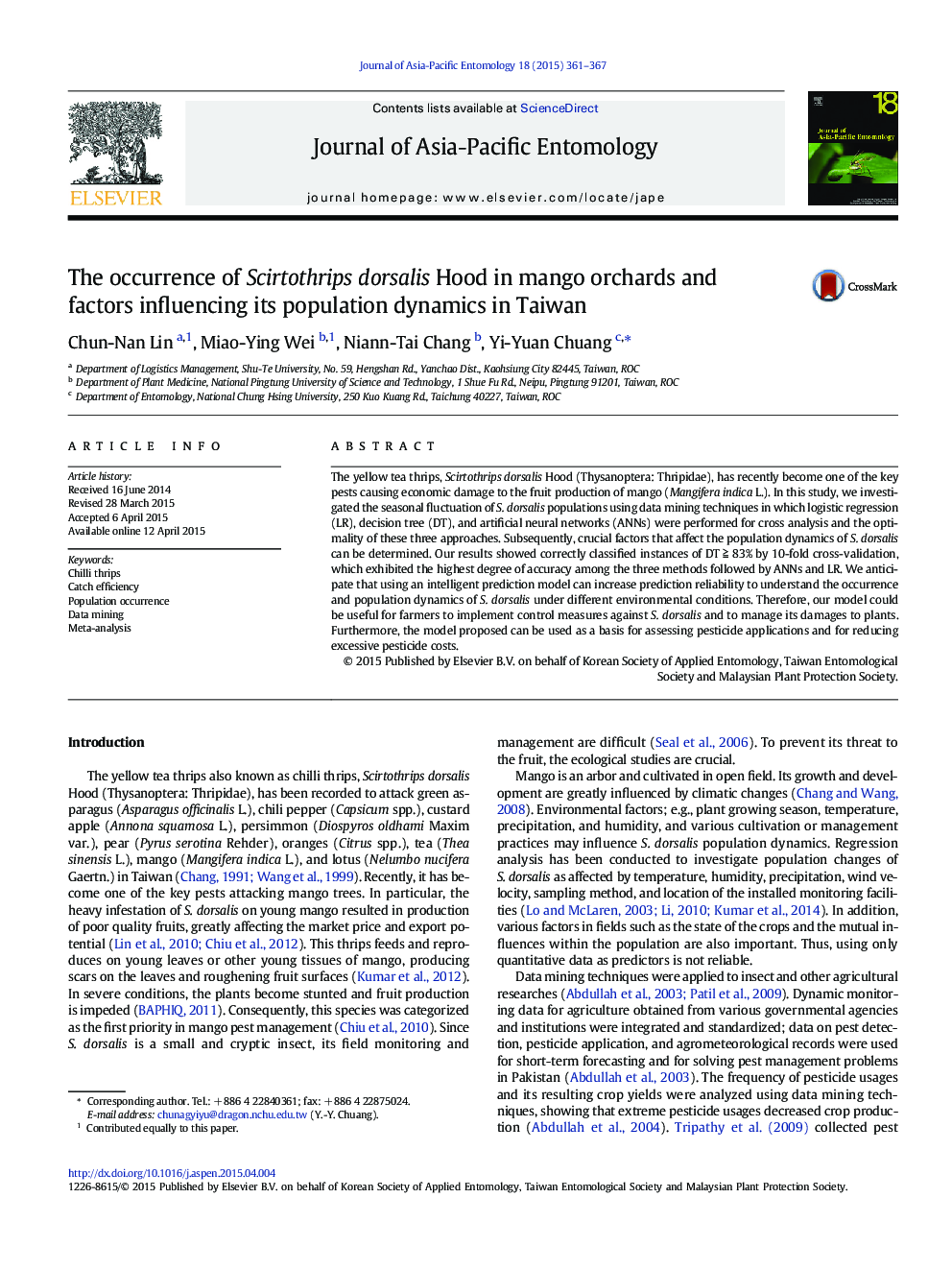| Article ID | Journal | Published Year | Pages | File Type |
|---|---|---|---|---|
| 4524647 | Journal of Asia-Pacific Entomology | 2015 | 7 Pages |
•We analyze the population dynamics of S. dorsalis in mango orchards by data mining.•DT is superior to LR and ANNs for analyzing the occurrence of S. dorsalis.•Temperature, month, and relative humidity are affecting the amount of S. dorsalis.•This model can be used as the basis for assessing pesticide applications.
The yellow tea thrips, Scirtothrips dorsalis Hood (Thysanoptera: Thripidae), has recently become one of the key pests causing economic damage to the fruit production of mango (Mangifera indica L.). In this study, we investigated the seasonal fluctuation of S. dorsalis populations using data mining techniques in which logistic regression (LR), decision tree (DT), and artificial neural networks (ANNs) were performed for cross analysis and the optimality of these three approaches. Subsequently, crucial factors that affect the population dynamics of S. dorsalis can be determined. Our results showed correctly classified instances of DT ≧ 83% by 10-fold cross-validation, which exhibited the highest degree of accuracy among the three methods followed by ANNs and LR. We anticipate that using an intelligent prediction model can increase prediction reliability to understand the occurrence and population dynamics of S. dorsalis under different environmental conditions. Therefore, our model could be useful for farmers to implement control measures against S. dorsalis and to manage its damages to plants. Furthermore, the model proposed can be used as a basis for assessing pesticide applications and for reducing excessive pesticide costs.
Graphical abstractFigure optionsDownload full-size imageDownload as PowerPoint slide
